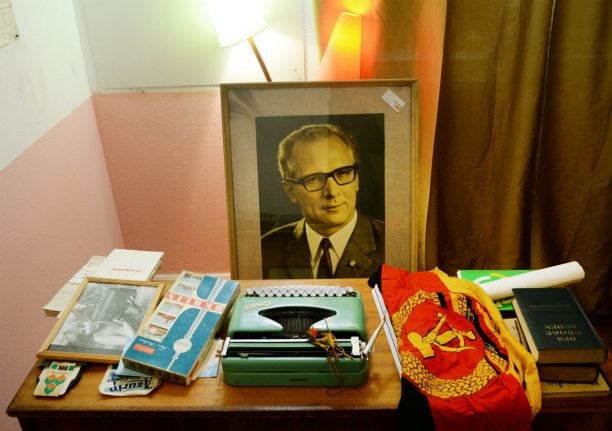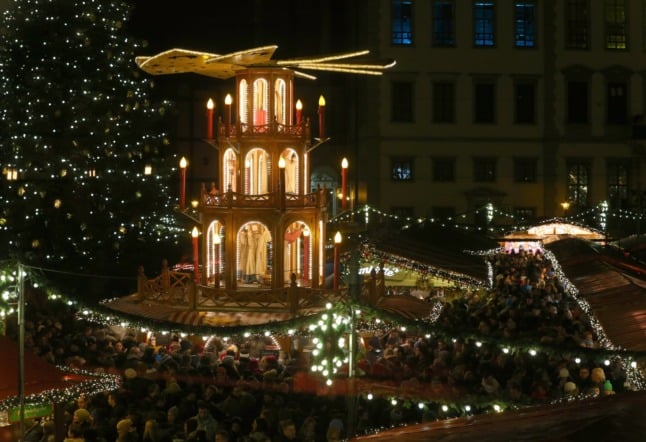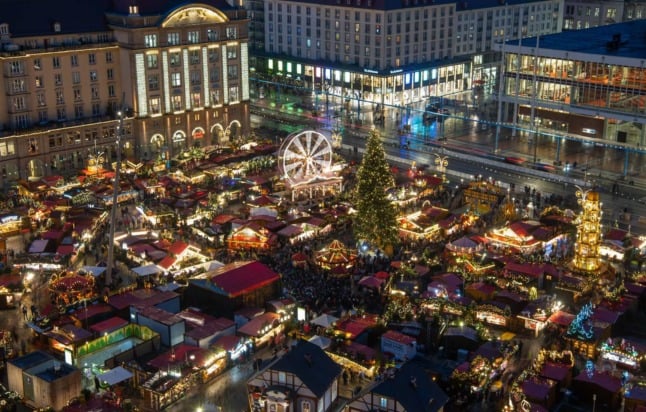“Permits, please,” visitors are told, as the gate cracks open to reveal a border post with another officer asking for identity papers – all part of a live event featuring “Good Bye Lenin!”, the popular 2003 film set in communist East Germany.
Organisers of the show have brought the defunct state to life in an old post office, and for seven nights at a hefty €30 per ticket, visitors can taste life in the grim authoritarian state before ending the evening with a screening of the film.
Along the corridors decorated with commemorative Communist Party congress metal plates and portraits of former East German leader Erich Honecker, Stasi guards whisper conspiratorially.
In a windowless room, a secretary is furiously typing documents, while a fake grocery store sells Eastern products like Bautz'ner mustard or toys featuring the cartoon character Sandman.
And at a restaurant run by East German train caterer Mitropa, the menu features just three food options – gherkins and two hearty dishes ubiquitous in the former eastern bloc – solyanka, a thick Russian soup, and goulash.
They can be washed down with Club Cola – the former German Democratic Republic's answer to Coke – or a luminescent green Gruene Wiese cocktail or Pfeffi schnapps, a pungent peppermint concoction.
There are also rules to be observed in the 2,000 square metres recreating the former police state – film-goers have to turn up in clothes in keeping with East German fashion and no photography is allowed.
“It's always great to hear people saying that when they watch a film in the cinema, they feel like they have been transported to another world,” event organiser Christopher Zwickler told AFP.
“So we thought, how can we take this one step further, so that you have a live cinema experience where the viewer also becomes a leading actor that evening.”
'Ostalgie'
The beloved comedy-drama “Good Bye Lenin!” tells the story of a young man who desperately recreates life in the GDR for his mother, a staunch believer in the Communist cause, who has just woken up from a coma during which she completely missed the fall of the Berlin Wall.
Peter Meyer of East German rock band Die Puhdys, who was invited to Monday's opening screening, noted the “Club Colas, the way in which people were welcomed” were all reminiscent of life in the east.
The director of the film, Wolfgang Becker, who was also among invited guests, said the experience was “like being in an Ost-Disneyland.”
Florian Balke, who was born in the east and turned up dressed in an 80s style tracksuit top, acknowledged the apparent enthusiasm among those who have come to relive life in the east.
But he rejected ideas that “Ostalgie” – a word that combines “nostalgia” and the German word for “East” – was anything serious.
“Personally I'm glad that the Wall is no longer there and I wouldn't want to live like it was before,” said the 30-year-old who makes his living through advertisements earned through his YouTube channel.
“I'm glad to see all this, but I'm happier that I can enjoy this in a free country.”
For Zwickler, the event is simply a means to enhance the viewer experience – and another way of attracting movie-goers as home theatres increasingly crowd out cinemas.
“Maybe it's a vision for cinemas in the future, there are technical advances, 3D is getting better, sound and pictures are getting better and bigger,” he said.
“But there is another trend where you say we want to immerse people deeper in a film,” said Zwickler, whose company plans to organise similar events twice a year.





 Please whitelist us to continue reading.
Please whitelist us to continue reading.